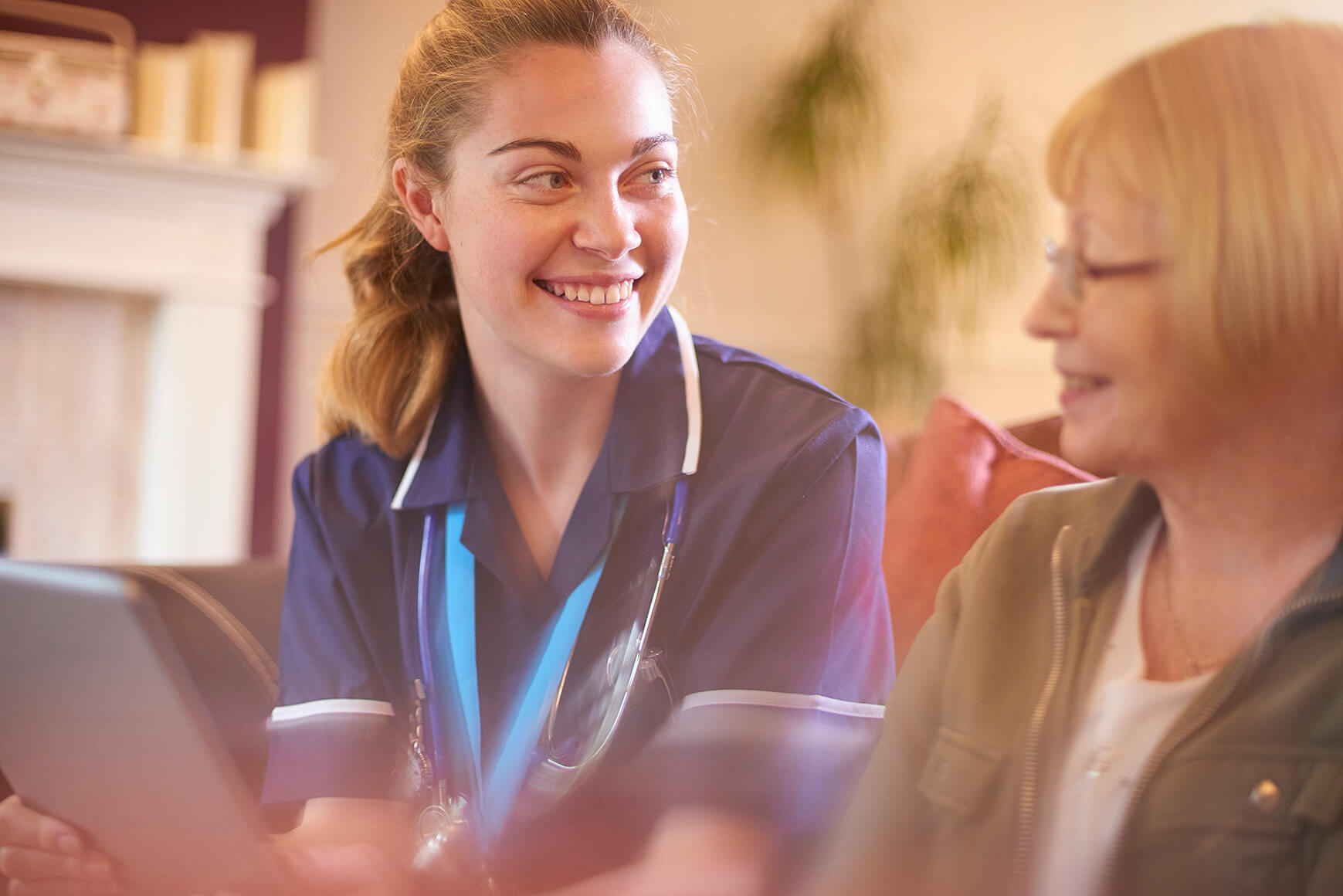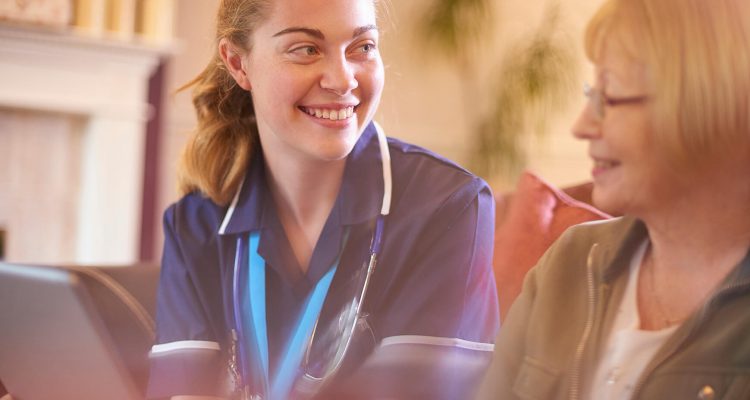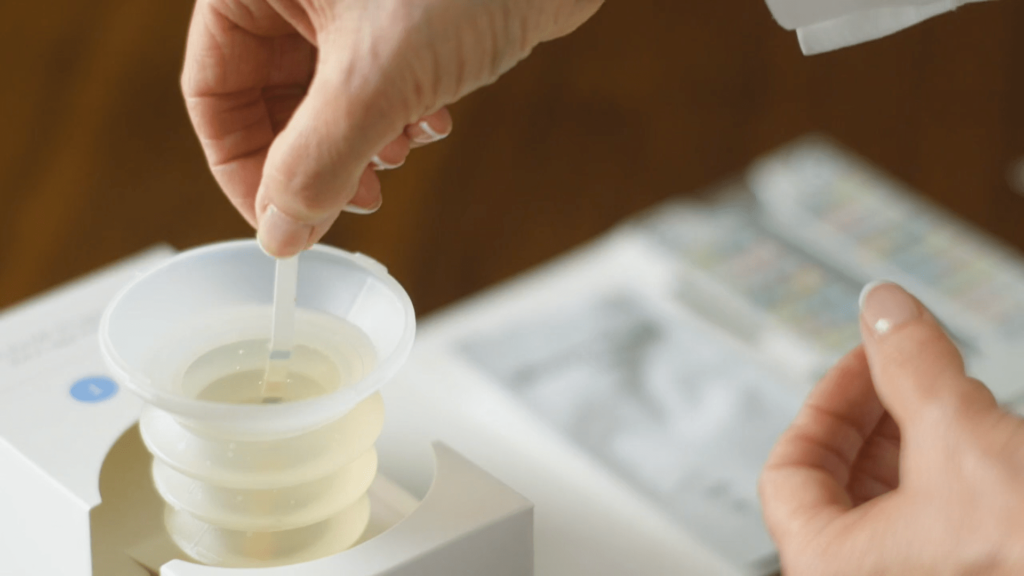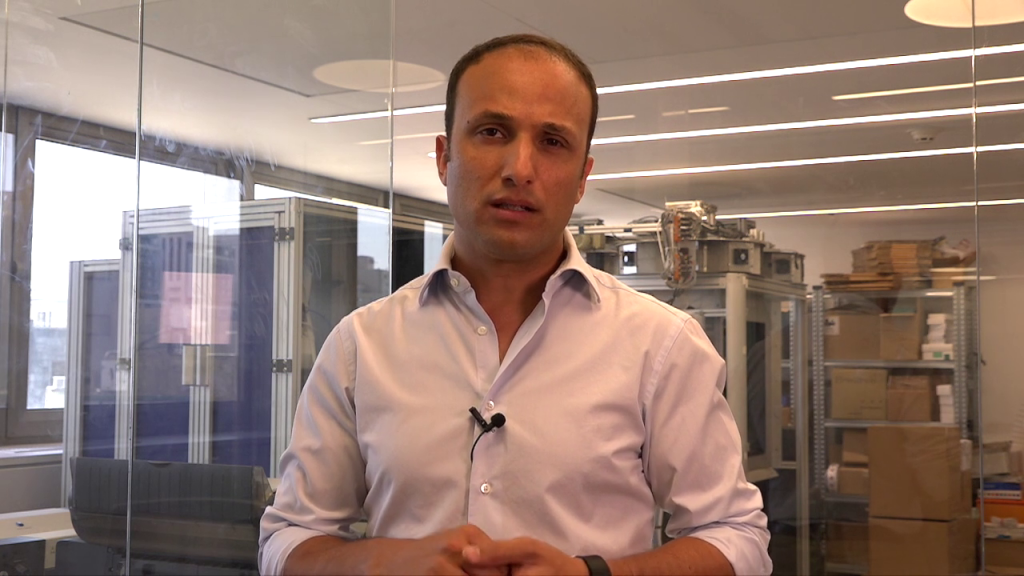The annual cost of wound care in the United Kingdom is over £8 billion. To help wounds heal faster—and lighten the burden of care—nurses need digital tools to accurately track wounds and make informed clinical decisions.
It’s another spring morning as Lily, a district nurse in East London, reviews her schedule, grabs her supplies, and sets off for her usual round of house calls.
Lily’s patients live in all sorts of homes: terrace houses, mock Tudors and estates. The patients are alike in that they all live in proximity to the clinic, but even in the best of times, they could not easily travel there if they had to. They tend to be elderly and bedridden. They suffer from a host of chronic conditions and are at a heightened risk for COVID-19. Lily is one of their few regular contacts with the outside world.
Lily parks by a terrace house at the end of a cul-de-sac, puts on her personal protective equipment, removes the key from a lock box and lets herself in. Maggie, a silver-haired woman in her mid-70s, has been expecting her. She’s lying on her sofa, propped up by cushions. Like many of Lily’s patients, Maggie suffers from chronic wounds. Maggie got hers—two beneath her left knee—when she suffered a nasty fall in her garden a year ago. She first tried to treat them herself, but in the ensuing weeks they became inflamed and began to inhibit her movement. A year later, Maggie’s wounds haven’t gone away, and a district nurse visits her every week to tend to them.
As Lily quickly sets up an impromptu workspace, the two women chat. Lily hasn’t been assigned to visit Maggie in a while. Throughout the pandemic, nurses on Lily’s team were in and out of quarantine and some of the nurses were temporarily shifted to hospitals. Her regular routine became somewhat haphazard as a result. Even though the other nurses who visited took some notes, it isn’t entirely clear to Lily how Maggie’s wounds have been progressing. When Maggie hikes up her trousers and Lily removes the old dressings, the wounds look about the same to her, though she can’t remember whether they were always quite so sloughy. But time is of the essence—Lily is already running late for her next appointment. She cleans the wounds, takes quick measurements with a paper ruler, and applies fresh ointments and dressings. Then she goes off to see her next patient.
A Growing Burden
Maggie is not alone. An estimated 3.8 million people in the United Kingdom suffer from wounds can that take months or even years to heal. Could Maggie’s wounds—and those of so many others—heal faster? Even given the time constraints, could something be done to improve care and expedite healing?
This is the problem at the heart of wound care in the United Kingdom today. Thousands of medical professionals—most of them nurses—do thankless, heroic work, day in and day out caring for patients with wounds. To stand any chance of healing—and to alleviate at least some of the attendant suffering in the interim—chronic wounds require precise and regular care. But health professionals lack the tools necessary to deliver optimal treatment.
Recent research conducted among wound care professionals in the UK has identified a general increase in workloads and a decrease in time spent with individual patients. Fewer specialist clinics means that the burden of care falls disproportionately on district nurses like Lily who make house calls, where delivering quality care is even more challenging than in an outpatient clinic. The number of district nurses has steadily declined in recent years, adding to the pressure on the remaining nurses. Naturally, the coronavirus pandemic only exacerbated the problem.
As the surgeon and writer Atul Gawande has noted, despite incredible medical advances over the past century, some ailments remain frustratingly intractable. The impact of curing them, however slowly, cannot be overstated. Chronic wounds certainly belong in that category. The annual cost of wound care to the NHS is upwards of £8 billion annually—roughly equivalent to the annual cost of cancer care. That number is likely to increase in the coming years. Even a slight improvement in healing time could result in dramatic savings and free up clinicians’ time to deal with other patients. Not to mention the priceless contribution to patients’ wellbeing.
The Heroism of Incremental Care
Chronic wounds rarely respond to singular interventions. Rather, they require an incremental approach. But for Lily’s hard work to bear fruit in the form of slow and steady wound healing, nurses’ heroic efforts must be augmented by careful assessment, measurement and tracking of wounds over time. Gawande calls this the heroism of incremental care: empowering the hard and devoted work performed by clinicians with the insights made possible by continuous measurement and analysis. Such insights allow for informed adjustments to treatment plans, thus facilitating more rapid healing.
Numerous studies have demonstrated the importance of continuous wound measurement to healing. The reason is simple: the question of whether a wound is getting better or worse is a quantifiable one. Baseline measurements can help make initial predictions about the expected healing rate. These predictions, augmented by long-term measurements, will clarify whether treatment has been effective or not, and inform decisions over changes to treatment and the need to consult with tissue viability nurses and other experts.
But mostly due to lack of tools and time, it’s difficult for caregivers to maintain consistency and accuracy in reporting from one visit to the next. Wounds come in complex shapes and dimensions; the paper rulers many nurses use are simply not up to the task. Measurements taken with paper rulers are often inconsistent, overestimate the wound’s size, and do not differentiate between its various layers.
The use of a camera to document a wound’s progress and for sharing with specialists is a step in the right direction, but many nurses in the UK do not have access to the requisite equipment. Additionally, simple photography doesn’t allow for precise measurement and tracking of a wound’s dimensions, as it fails to account for the body’s contours, let alone characteristics such as pain or odour. Nurses also lack a secure centralised hub for storing and sharing their wound documentation, and are more likely to share the photos with their team via instant messaging.
Research has also found unwarranted variation in the delivery of wound care, including the underuse of effective methods and the possible overuse of unproven methods. Here too, the first step to putting in place standard clinical pathways is the implementation of regular, quantitative wound measurement and assessment, and making the results immediately available to all relevant clinicians.
Digital Tools to Empower the Human Touch
Solving the problem of suboptimal wound care won’t just save nurses’ time and public money. At its heart is the quality of life of almost four million people in the UK who suffer from acute and chronic wounds. Many are home-ridden, if not bed-ridden, and suffer from a host of co-morbidities that further complicate their lives. Wounds are uncomfortable and often odorous. They usually make bathing difficult, resulting in a vicious cycle which can lead to social seclusion, loneliness and even depression. This is where the unsung virtues of nurses are at their most irreplaceable.
The contribution of nurses to their patients’ general welfare is unparalleled. They supplement their hard-earned medical expertise with remarkable wellsprings of empathy. They take their patients’ pain seriously. There is no alternative to their human touch.
The National Wound Care Strategy Programme, commissioned by the NHS, is still taking shape, but it is already clear that an effective strategy must highlight the need to augment clinicians’ hard work with regular, in-depth measurement and analysis that will reduce uncertainty to a minimum and inform clinical decision-making. The Commissioning for Quality and Innovation (CQUIN) framework, introduced by the Department of Health, has already identified “Improving the assessment of wounds” as one of its targets.
In order to advance wound care, nurses must receive the tools they need to assess wounds quickly, accurately, and regularly. Harnessing the power of technology to measure and analyse wounds can give clinicians crystal clear answers to whether or not the wound has changed—and what that change entails. Tracking wounds over time will allow clinicians to make informed, evidence-based decisions regarding their patients’ care plans.
Given the right tools in hand, nurses like Lily, with their limited time but unlimited empathy, will be empowered to deliver truly holistic care. As wounds heal faster, they will have more time to devote to patients who need their help most. Combining nurses’ talents and skills with the best that technology has to offer is the path to healing wounds better.
Names and some identifying details have been changed to protect the privacy of the individuals described in this article.






